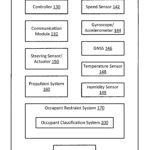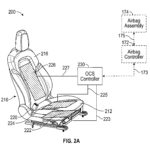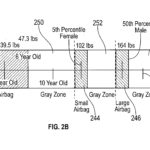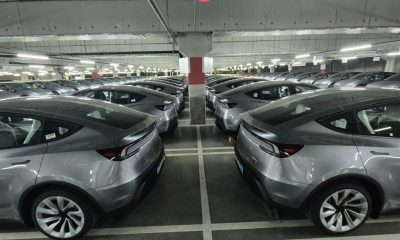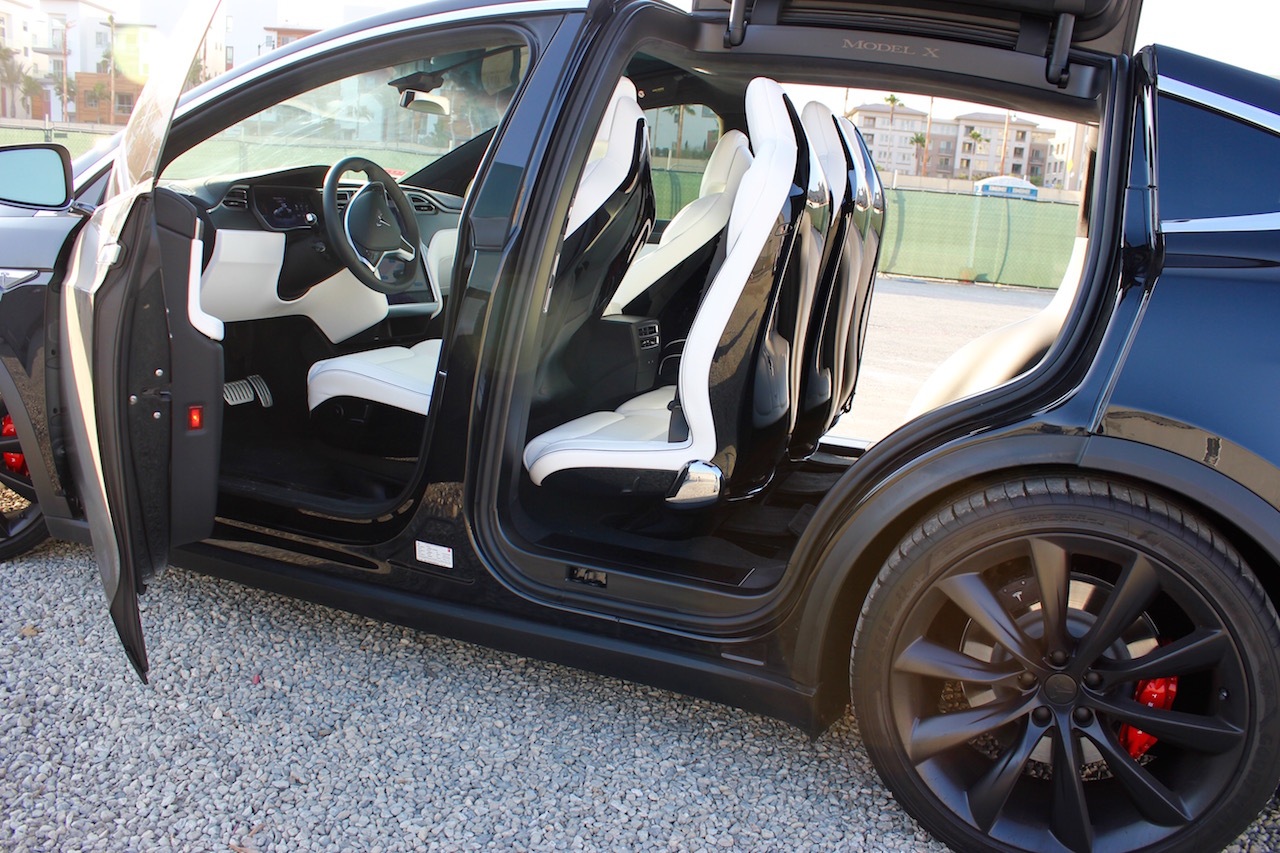

News
Tesla designs safer airbag deployment system through seat sensors in new patent
Tesla’s electric cars are among the safest on the road, so much so that the Model 3, Model S, and Model X are among the NHTSA’s top vehicles with the lowest probability of injury in the event of an accident. Thanks to Tesla’s use of ultra-high-strength steel and aluminum, as well as the vehicles’ extra large crumple zones due to their all-electric design, the company’s electric cars are capable of protecting their occupants when untoward events happen on the road.
If a recently published patent application is any indication, though, it appears that Tesla is exploring more ways to make its vehicles even safer. Tesla’s recent patent, titled “Sensors for Vehicle Occupant Classification Systems and Methods,” taps into the company’s prowess in tech by using a system that alows cars to detect and/or classify their occupants based on readings from a series of sensors in the seats. With such a system in place, safety features could activate in a way that is optimized for passengers.
- Diagrams depicting Tesla’s “Sensors for Vehicle Occupant Classification Systems and Methods” patent. (Credit: US Patent Office)
- Diagrams depicting Tesla’s “Sensors for Vehicle Occupant Classification Systems and Methods” patent. (Credit: US Patent Office)
- Diagrams depicting Tesla’s “Sensors for Vehicle Occupant Classification Systems and Methods” patent. (Credit: US Patent Office)
Diagrams depicting Tesla’s “Sensors for Vehicle Occupant Classification Systems and Methods” patent. (Credit: US Patent Office)
Tesla notes that cars on the road today are becoming safer overall, thanks to systems that monitor operations while the vehicle is in motion and features that provide coordinated alerts and assistance as needed. While such processes make vehicles safe, though, Tesla states that there is still a large area for improvement. One such area, according to the electric car maker, is in the way airbags deploy in the event of an accident.
“Difficulties remain in reliably detecting the presence of vehicle occupants and accurately classifying them as children, relatively small adults, and/or according to other classifications, and particularly in differentiating between classifications. Accurate classification can be critical when the vehicle is attempting to assist or enact safety measures to protect the occupant.
“In particular, airbag deployment can be adjusted to reduce risk of injury caused by the airbag while maintaining safety of the occupant during a collision. However, while reduced-force airbag deployment is recommended for relatively small adult females, it is not recommended for young children, even though the young children can reach heights and weights approaching those of the relatively small adult females. Thus, there is a need for an improved methodology to provide reliable and accurate vehicle occupant classification, particularly in the context of controlling an occupant restraint system that can apply force to an operator of the vehicle.”
Tesla’s patent application explores the use of sensors placed on the vehicle’s seats that enable the cars to classify their occupants. By classifying the size, weight, and body type (among others) of a passenger, the car would be able to deploy airbags in the safest way possible during an accident. Tesla describes this system as follows.
“In accordance with various embodiments of the present disclosure, occupant detection and classification may be provided by an occupant weight sensor, an occupant presence sensor, and a logic device configured to convert sensor signals provided by the occupant weight sensor and the occupant presence sensor into an estimated occupant weight and an occupant presence response, which may be used together to reliably detect and classify the occupant with increased sensitivity, accuracy, and granularity compared to conventional detection systems.
“In particular, embodiments of the present occupant classification system may be employed to detect and differentiate a child from a relatively small woman or man and disable, partially enable, or fully enable an airbag as appropriate. Such occupant classification systems may be implemented with various types of user feedback mechanisms, including reporting detections and classifications both locally and remotely, such as to a smartphone, for example, and reporting potentially unsafe conditions and/or undesired operation of the vehicle, as described herein.”
With this system in place, Tesla’s electric cars would be even safer than they already are. If any, this would widen the gap further between Tesla’s vehicles and conventional cars, many of which are bogged down in frontal collisions due to the presence of a large, heavy engine under the hood. That said, this recent patent application all but emphasizes Tesla’s proactive nature and the company’s tendency to always make efforts to improve.
This particular nature was emphasized by Elon Musk on Twitter last October, when he explained that there is “no such thing” as a “full refresh” or even a model year at Tesla. In his tweet, Musk stated that all the company’s vehicles are partially upgraded every month “as soon as a subsystem is ready for production,” thereby ensuring buyers that they are getting the best vehicles available at their time of purchase. This, coupled with Tesla’s trademark over-the-air updates — which give new features from driver assist functions such as Navigate on Autopilot, to fun, quirky things like the Romance Mode Easter Egg — truly make the company’s electric cars unique on the road.
The full text of Tesla’s recent patent application could be accessed here.
News
Volkswagen teams with Uber for robotaxi service with the ID. Buzz
Volkswagen and Uber team up to launch a driverless ID. Buzz robotaxi fleet in U.S. cities. Testing starts in LA this year.

Volkswagen of America and Uber unveiled a plan to launch a commercial robotaxi service using autonomous electric ID. Buzz vehicles across U.S. cities over the next decade. The partnership marks a significant step for Volkswagen’s autonomous vehicle ambitions, leveraging Uber’s ride-hailing expertise.
The service will debut in Los Angeles by late 2026, with human safety operators initially overseeing the fleet before transitioning to fully driverless operations in 2027. Volkswagen ADMT, the German automaker’s autonomous subsidiary, will begin testing in Los Angeles later this year upon securing a testing permit from the California Department of Motor Vehicles. The California Public Utilities Commission will oversee permits for the commercial ride-hailing phase.
“Volkswagen is not just a car manufacturer — we are shaping the future of mobility, and our collaboration with Uber accelerates that vision,” said Christian Senger, CEO of Volkswagen Autonomous Mobility. “What really sets us apart is our ability to combine the best of both worlds–high-volume manufacturing expertise with cutting-edge technology and a deep understanding of urban mobility needs.”
The Trump administration’s recent policy shift, announced last Thursday by Transportation Secretary Sean Duffy, supports initiatives like VW and Uber’s partnerships by easing federal safety rules and crash reporting requirements on autonomous vehicle development. According to Duffy, the United States government wants to outpace Chinese competitors in autonomous vehicle development.
Volkswagen ADMT, which launched publicly in July 2023, has been testing 10 ID. Buzz vehicles equipped with Mobileye’s autonomous technology in Austin, reported TechCrunch. Two years ago, Volkswagen focused on selling self-driving vans and fleet management software rather than building its own ride-hailing service. VW’s strategy toward autonomous vehicles appears to have shifted, as reflected in its Uber partnership.
Uber will strengthen its autonomous vehicle portfolio through its partnership with Volkswagen. The ride-hailing service company has secured deals with over 14 firms, including Waymo in Austin and a forthcoming launch in Atlanta.
The Volkswagen-Uber collaboration positions both companies to capitalize on the growing robotaxi market. With testing imminent and regulatory support increasing, the ID. Buzz fleet could redefine urban mobility, blending Volkswagen’s manufacturing prowess with Uber’s ride-hailing network to compete in the evolving autonomous vehicle landscape.
News
These automakers are pushing to overturn California’s gas car ban
This lobbying group represents Detroit’s Big Three automakers, as well as several others selling vehicles in the U.S.
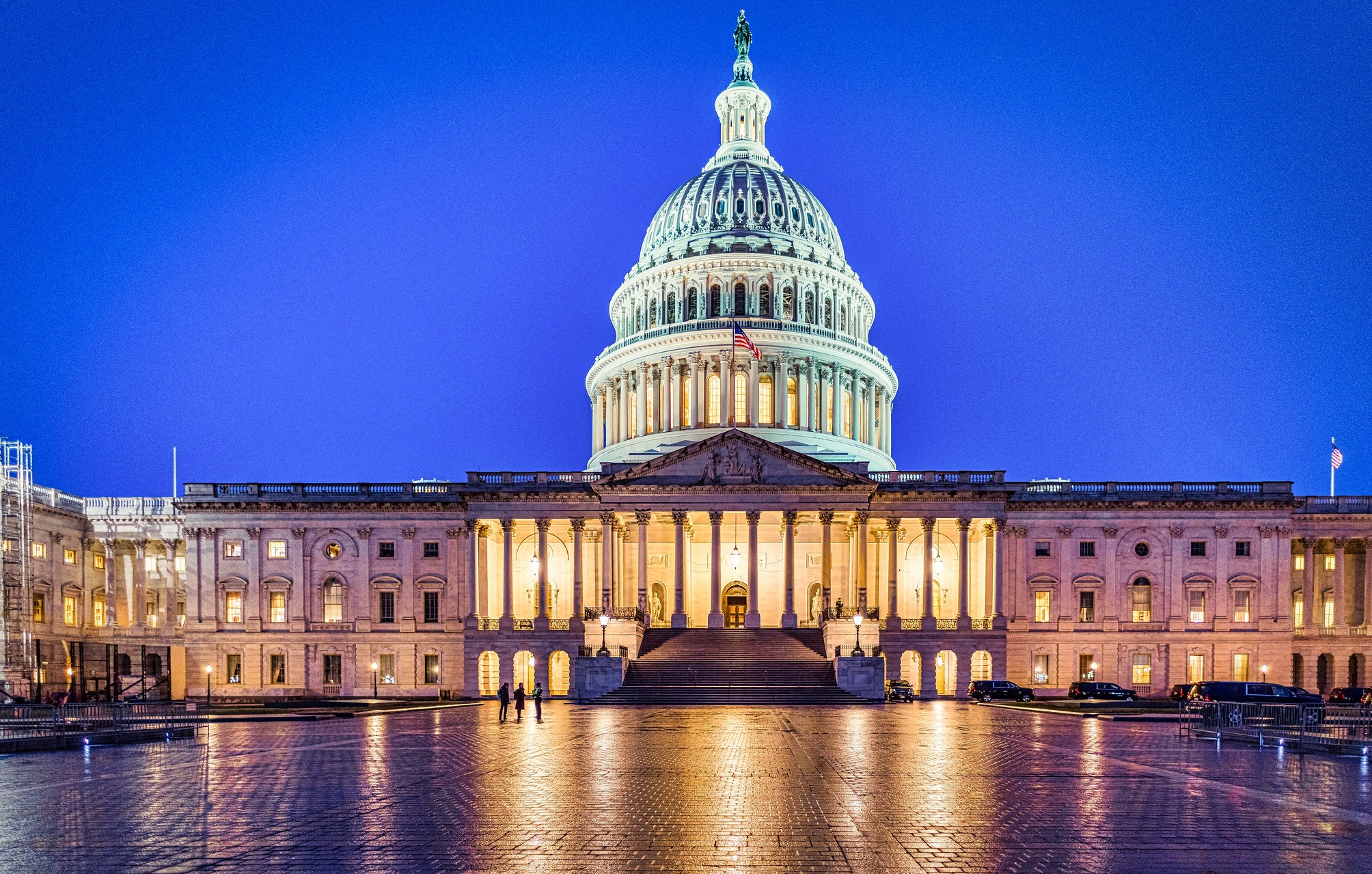
A lobbying group made up of several automakers is pushing Congress to ban California’s plan to phase out and ban new gas car sales altogether by 2035, ahead of a vote that could also affect the 11 other states that have followed with similar plans.
The Alliance for Automotive Innovation (AAI), an organization representing the interests of Ford, General Motors (GM), Stellantis, Toyota, Volkswagen, Hyundai, and several others, recently sent a letter to Congress requesting that it overturn a waiver granted to California letting it set its own emissions rules.
Later this week, the U.S. House of Representatives will vote on overturning the waiver granted to California under the 1968 Clean Air Act to impose the tightened standards, according to Reuters. In the previous letter, the AAI argued to Congress that automakers would be “forced to substantially reduce the number of overall vehicles for sale to inflate their proportion of electric vehicle sales,” adding that it would also boost prices and reduce competition in the market.
The waiver, enacted under the Biden administration’s Environmental Protection Agency (EPA), allows California to mandate at least 80 percent electric vehicle sales by 2035 under the Clean Air Act. The passage of disapproval of the waiver is being ushered under the Congressional Review Act, and an initial vote in the House of Representatives is set to take place on Wednesday.
READ MORE ON STATE EMISSIONS RULES: Tesla could face emissions credit tax in Washington
The U.S. Court of Appeals for the District of Columbia backed the EPA’s decision to grant the waiver last April, following a challenge from 17 Republican-run states. The group claimed that California was being given unconstitutional regulatory power in the decision, adding that other states didn’t have those same powers.
In December, the U.S. Supreme Court agreed to hear out bids from Valero, the AAI, and other groups to oppose the 2035 California gas car sales ban, which would begin phasing them out in 2026 if the waiver remains in place.
You can see the full list of members of the AAI below, including automakers and a handful of other tech companies.
Companies represented by the Alliance for Automotive Innovation (AAI)
Here’s the full list of AAI members, according to the lobbying group’s website:
- AESC
- AISIN
- Aptiv
- Autoliv
- BMW Group
- Bosch
- Denso
- Emergency Safety Solutions
- Ferrari
- Ford
- GM
- Harman
- Honda
- Hyundai
- InEos Automotive
- Infineon
- Isuzu
- Jaguar-Land Rover
- Kia
- LG
- Luminar
- Magna
- Mazda
- McLaren
- Mercedes-Benz
- Mitsubishi Motors
- Nissan
- Nuro
- Panasonic
- Porsche
- Qualcomm
- RV Industry Association
- Samsung
- SiriusXM
- SK On
- Stellantis
- Subaru
- Texas Instruments
- Toyota
- Uber
- VinFast
- Volkswagen
- Volvo
- Zoox
California proposal to allow self-driving tests for heavy-duty trucks
News
Neuralink’s third brain chip patient shares first video edited with BCI
The third Neuralink brain chip patient is the trial’s first patient with ALS and its first non-verbal patient, and he has detailed his experience regaining speech and more.
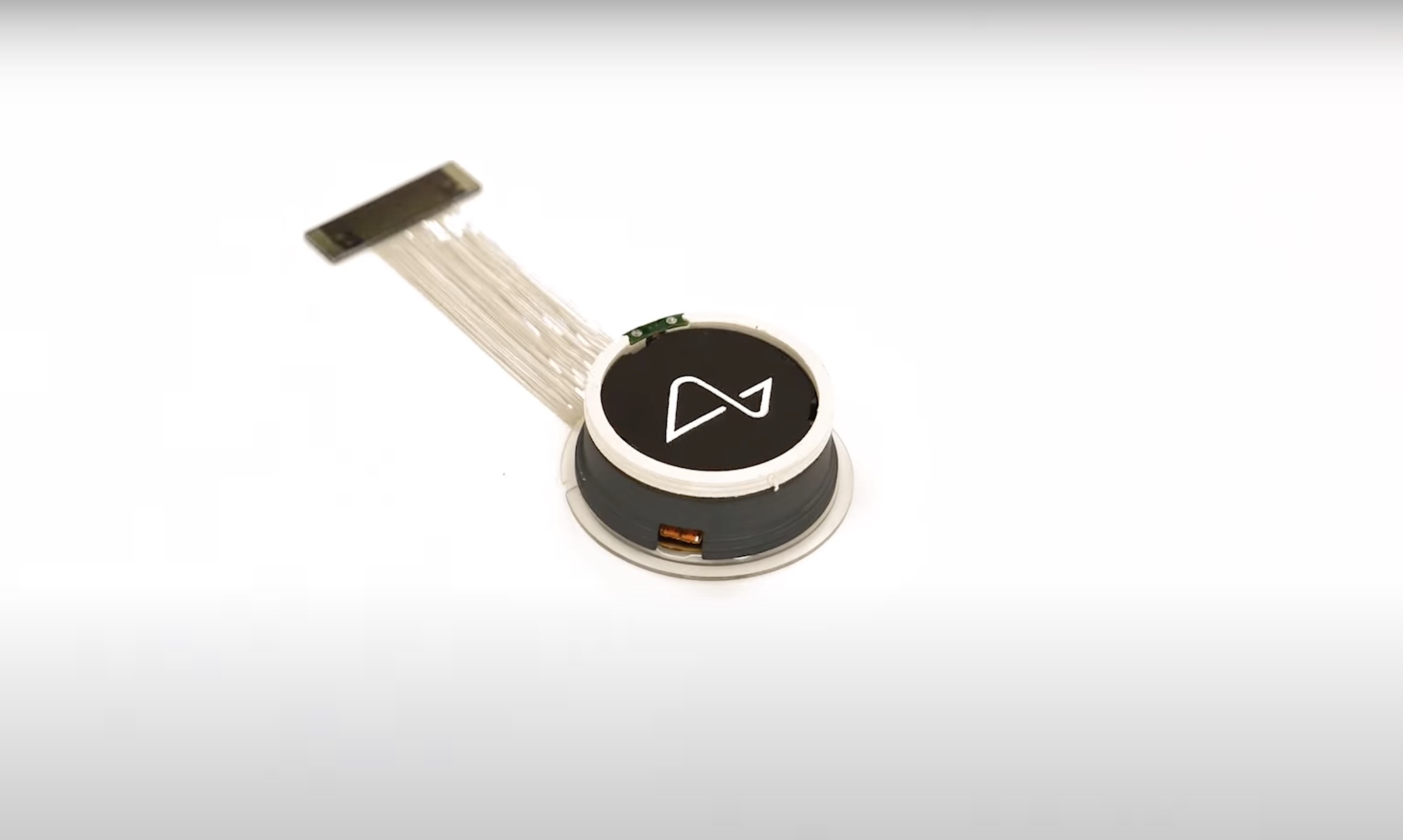
Elon Musk’s Neuralink has officially installed its brain-chip interface (BCI) into a third human patient, and the individual shared a video this week detailing his experiences gaining control of external devices and regaining the ability to talk through the use of AI.
On Monday, X user Bradford G Smith shared a video detailing his experience as the third person in the world to receive the Neuralink BCI, and as the first non-verbal patient and the first with Amyotrophic Lateral Sclerosis (ALS) to receive the implant. In the video, Smith details how the BCI works, how it’s less limiting than his previous eye tracker technology, and how it has literally helped him regain his voice through AI.
“I am typing this with my brain,” Smith wrote. “It is my primary communication.”
The video, which he says is the first edited directly with a BCI, is narrated by an AI-generated version of his old voice. Prior to the BCI, he was also unable to leave the house using his eye tracker, as it made it difficult to communicate unless he was in dark or low-light settings.
The video also shows how he’s able to connect with external devices using the BCI, with a live shots of him controlling his computer using a cursor.
You can see the full update below, which runs a little under 10 minutes.
READ MORE ON NEURALINK: Elon Musk: over 1,000 humans with Neuralink implants in 2026 is feasible
The news follows Neuralink’s initial update with Brad and other initial BCI patients, as was shared in a post on the company’s website in February. In it, Brad also explained how groundbreaking it was to be able to communicate outside and see his son win a robotics award, along with being able to consider leaving the city area for the first time in half a decade:
The most significant thing that happened this week will sound strange to you: I got to use the computer on the porch, and it worked!!
I went to [my child’s] soccer game, and the referee thought I was sleeping. I was actually able to talk outside. I [am] actually thinking about traveling outside the [city] metro [for] the first time in 5 years.
Both of Neuralink’s studies focus on restoring autonomy to people who are paraplegic through the use of external devices. The company gained initial approval from the U.S. Food and Drug Administration (FDA) to install the first BCI in a human patient in May 2023, with Noland Arbaugh being the first, a patient named Alex being the second, and Brad being the third.
Neuralink opened its Patient Registry worldwide earlier this month, allowing participants to submit to take part in the company’s initial PRIME and CONVOY studies. The firm also announced plans to operate the PRIME study out of a second location in Miami, Florida in January, after an initial location was launched in Phoenix, Arizona.
Last week, it was reported by Bloomberg that Neuralink is currently targeting a $500 million funding round at a valuation of $8.5 billion. Meanwhile, Neuralink has also been constructing office buildings near Austin, Texas, which initially aimed to be completed in May 2025.
-

 News1 week ago
News1 week agoTesla’s Hollywood Diner is finally getting close to opening
-

 Elon Musk2 weeks ago
Elon Musk2 weeks agoTesla doubles down on Robotaxi launch date, putting a big bet on its timeline
-

 News4 days ago
News4 days agoTesla is trying to make a statement with its Q2 delivery numbers
-

 News2 weeks ago
News2 weeks agoTesla’s top investor questions ahead of the Q1 2025 earnings call
-

 News2 weeks ago
News2 weeks agoUnderrated Tesla safety feature recognized by China Automotive Research Institute
-

 News2 weeks ago
News2 weeks agoTesla reveals its Q1 Supercharger voting winners, opens next round
-

 Investor's Corner7 days ago
Investor's Corner7 days agoLIVE BLOG: Tesla (TSLA) Q1 2025 Company Update and earnings call
-

 News2 weeks ago
News2 weeks agoTesla police fleet saves nearly half a million in upkeep and repair costs

